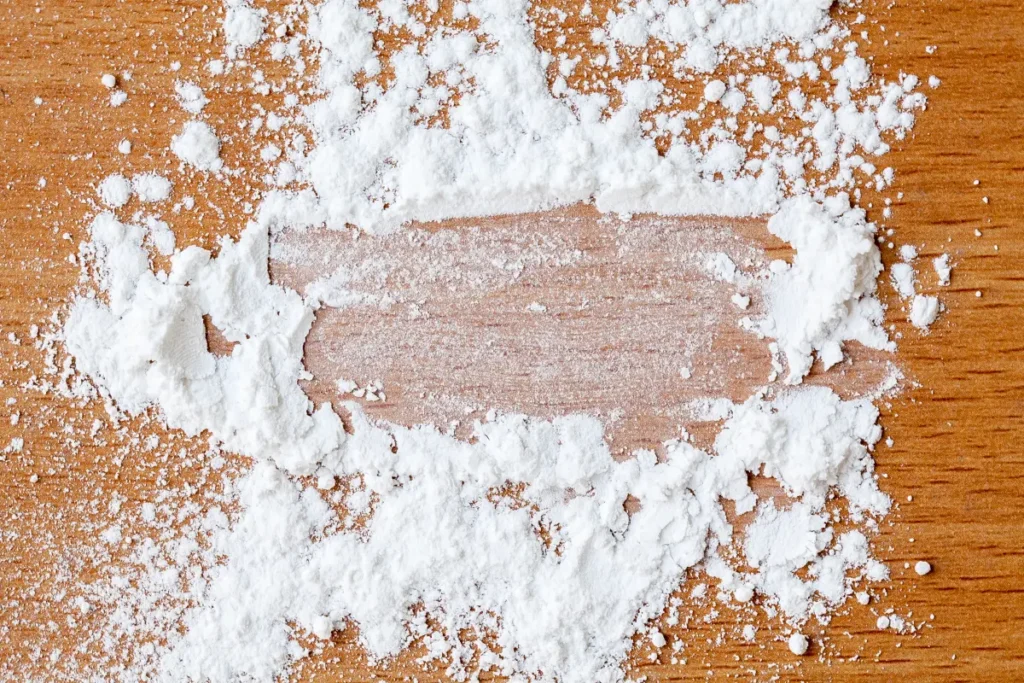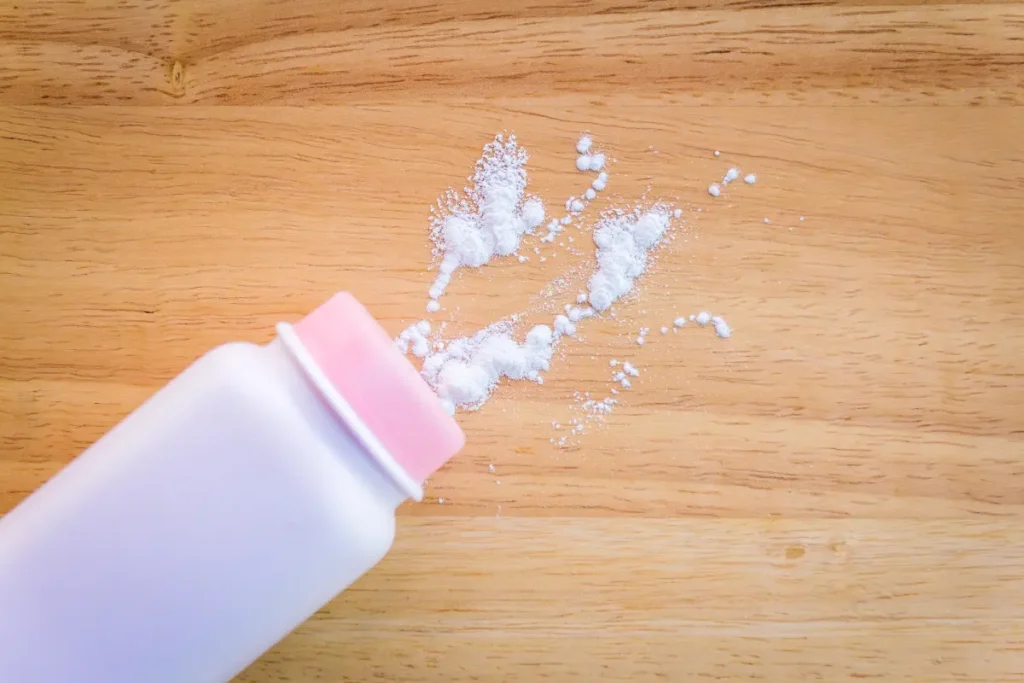Talcum Powder Lawsuits Against Johnson & Johnson
Since 2017 Johnson & Johnson has been hit with 38,000 lawsuits accusing the company’s baby powder of being laced with asbestos, causing users to develop ovarian cancer and mesothelioma.
Minnesota residents who used talcum powder and have been diagnosed with ovarian or mesothelioma cancers may still be able to file lawsuits seeking compensation for their injuries.

Home » Defective Drug Lawyer » Talcum Powder Lawsuit
- What is talc?
- Talc and Asbestos
- Talc and Ovarian Cancer
- Juries Awarding Significant Payouts to Women with Ovarian Cancer
- Juries Finding in Favor of Mesothelioma Victims
- Other Talcum Powder Lawsuits
- When did Johnson & Johnson know about the cancer risks?
- Minnesota Statute of Limitations – Can You File a Talcum Powder Lawsuit?

What is talc?
Talc is the primary ingredient in Johnson & Johnson’s Baby Powder. It is a natural mineral that contains magnesium, silicon, oxygen, and hydrogen. Talc is extracted from the earth in a mining process and has been used for decades in cosmetic and personal care products. Because talc is soft, it doesn’t irritate the skin. Another property of talc that makes it useful in personal care products is its ability to absorb moisture, human oils, perspiration, and odors.
Talc and Asbestos
Like talc, asbestos is a naturally-occurring silicate mineral. Other than its structure, the main difference between talc and asbestos is that asbestos is a known human carcinogen. When asbestos fibers are released into the air, the fibers break down into tiny particles that can be inhaled into our lungs. This can cause scarring and inflammation, and lead to cancer.
Asbestos is often located near talc deposits. Fibers from asbestos can contaminate talc ore during mining if proper care is not taken in site selection or if the talc is not properly purified after extraction. The potential contamination of talc with asbestos has been a much-discussed issue dating back to the 1970s.

Talc and Ovarian Cancer
The International Agency for Research on Cancer (IARC), under the auspices of the World Health Organization, classifies talc contaminated with asbestos as carcinogenic to humans. According to the American Cancer Society, studies suggest an increased risk of ovarian cancer from personal use of talcum powder.
A 2015 study published in the British Medical Journal found talc use increased the risk of ovarian cancer by 30 to 60 percent in almost all well-designed studies.
Juries Awarding Significant Payouts to Women with Ovarian Cancer
Juries in talcum powder cases are finding a causal link between Johnson & Johnson’s Baby Powder and ovarian cancer. In New Jersey alone, where the company is headquartered, women and their families have filed nearly 1,000 ovarian cancer claims.
The average talcum powder lawsuit awards are in the tens of millions, with some cases totaling in the hundreds of millions or billions.
The Missouri Supreme Court let stand a $2.12 billion total award to 22 women who said J&J talc products tainted with asbestos gave them ovarian cancer. The original jury verdict of $4.14 billion in punitive damages and $550 million in compensatory damages was later reduced. The U.S. Supreme Court upheld the ruling in 2021.
J&J faces many more ovarian cancer claims that are still pending.
Juries Finding in Favor of Mesothelioma Victims
Mesothelioma is a rare form of cancer in the chest and stomach lining. Exposure to asbestos increases the risk of a diagnosis of this cancer. Early talc powder lawsuits with claims that asbestos-tainted J&J baby powder led to mesothelioma have had success.
- Jurors in California state court found J&J liable for a 68-year-old woman’s mesothelioma. The plaintiff was exposed to the carcinogenic baby powder when she used it on her children and for perspiration while bowling. Her damages were $21.7 million.
- A New Jersey jury ruled in favor of a man who developed mesothelioma after inhaling talc powder dust from birth into adulthood. His award was $30 million and his wife’s was $7 million.
- A Superior Court jury in Oakland found J&J liable for a woman’s mesothelioma in 2019. The jury concluded that J&J’s baby powder was a “substantial contributing factor” in her illness and ordered the company to pay the woman $29 million.
Other Talcum Powder Lawsuits
In October 2019 the FDA instructed consumers to stop using J&J’s baby powder (lot #22318RB). The agency’s researchers found asbestos in a sample of the talcum powder. J&J recalled the product.
Since then, plaintiffs have filed tens of thousands of lawsuits against J&J saying that its baby powder caused their ovarian cancer and mesothelioma. The lawsuits claim that J&J knew its baby powder talc was contaminated by cancer-causing asbestos but did nothing to warn consumers about the risk.
- J&J faces about 38,000 talcum powder lawsuits in multidistrict litigation.
- In 2015, a New Jersey panel of judges approved J&J’s request to consolidate management of more than 100 talcum powder lawsuits into multidistrict litigation under one umbrella judge.
- In October 2021 J&J transferred all talcum powder lawsuit liabilities to a related entity formed specifically for the purpose of limiting exposure from the massive lawsuits liabilities. The entity is now in bankruptcy proceedings in New Jersey.
- The bankruptcy court ruled the bankruptcy filing was in good faith when lawsuit plaintiffs challenged the maneuver. However, an appeal is underway to try to prevent J&J from skirting accountability.
A congressional subcommittee is considering legislation to prohibit companies from using this tactic of shifting liabilities to an entity in bankruptcy where awards can be more limited.

When did Johnson & Johnson know about the cancer risks?
Mentions of fibrous and needle-like tremolite contaminants in J&J baby powder date back to the 1950s, according to a Reuters report. Tremolite is classified as asbestos in its naturally occurring form.
Documents and legal data show that from 1971 to the early 2000s, J&J’s raw talc and final powders occasionally tested positive for traces of asbestos. Executives, mine managers, scientists, doctors, and lawyers were worried about the problem but never disclosed it to regulators.
Work from internal and outside labs and suppliers came up with similar findings. These reviews found contaminants in talc and finished powder products that were described in terms similar to asbestos – such as “fiberform” and “rods.”
Minnesota Statute of Limitations – Can You File a Talcum Powder Lawsuit?
Minnesota state statutes of limitations govern how much time can pass between an injury discovery and the filing of a lawsuit. Contact Milavetz Injury Law, P.A. at (763) 373-9369 for a free consultation on your potential to file for damages in a talcum powder lawsuit. You can also send us an email to arrange a free legal consultation.
Discuss Your Legal Questions With A Member Of Our Team
"*" indicates required fields




Speak to an Attorney Today
Let Us Help You With Your Financial Help & Compensation Options


